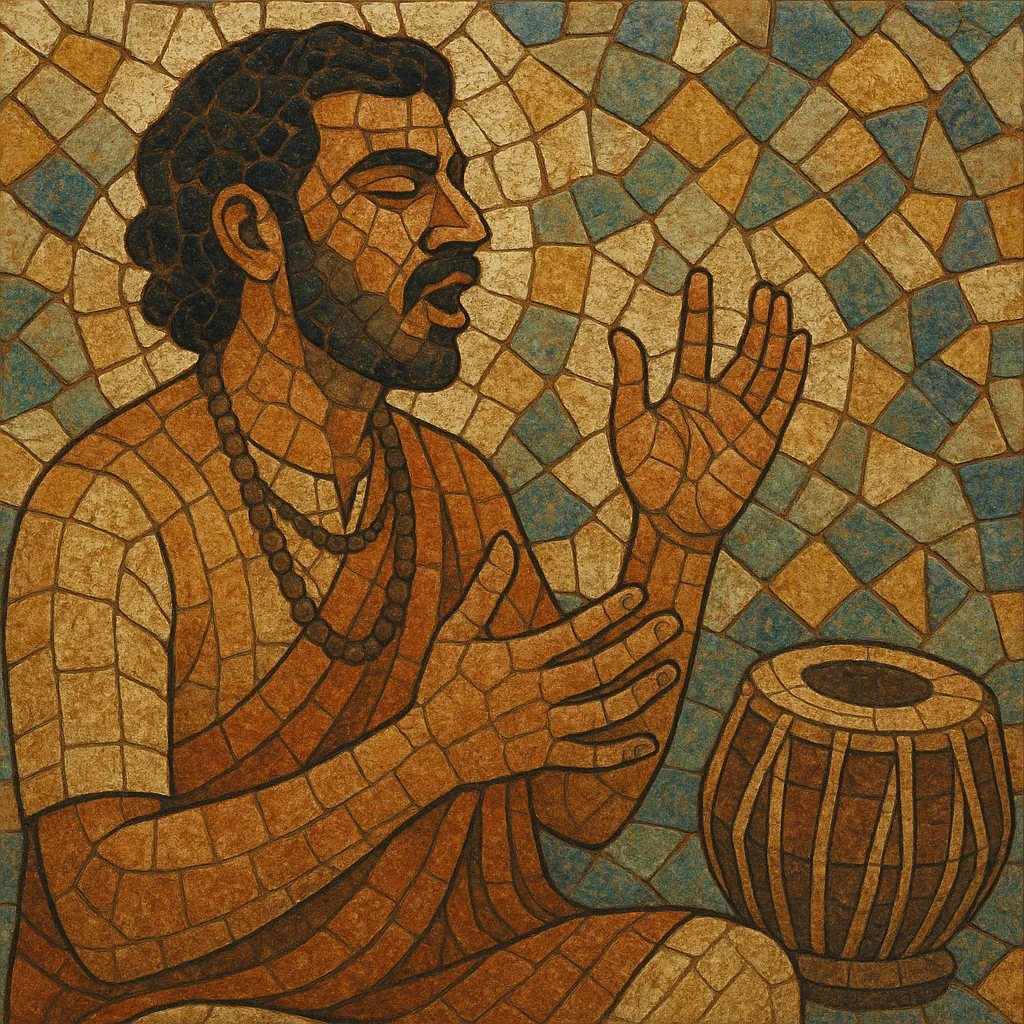Konnakol is the South Indian (Carnatic) art of vocalizing percussion using a codified set of rhythmic syllables known as solkattu. Performers speak or chant patterns such as "ta ka di mi," "ta din gi na tom," and many others to render tala (cycle) and nadai/gati (subdivision) with great clarity.
It functions simultaneously as pedagogy, composition, and performance practice. Konnakol encodes complex rhythmic mathematics (kanakku), including korvai (threefold cadences) and mora (repeated phrases that resolve precisely to the cycle’s sam/1). Its focus on articulation, breath control, microtiming, and accent makes it an exacting discipline as well as a virtuosic stage art.
While rooted in Carnatic classical music and typically dialoguing with instruments like mridangam, kanjira, and ghatam, konnakol has also crossed into contemporary jazz, fusion, and progressive idioms, where its sophisticated rhythmic language enriches improvisation and ensemble interplay.
Konnakol emerges from the solkattu tradition of South Indian (Carnatic) classical music, where vocal syllables transmit rhythmic knowledge across generations. Though rhythm syllables are ancient in India, konnakol as a formalized vocal performance practice coalesced within the Carnatic sphere by the 18th and 19th centuries alongside the crystallization of tala theory and percussion pedagogy.
Initially used to teach mridangam and other percussionists, konnakol evolved into a stand‑alone art. Performers recite flowing sarvalaghu (even) patterns and intricate kanakku designs, demonstrating mastery over nadai/gati (3, 4, 5, 7, 9 subdivisions), eduppu (offset entrances), and korvai/mora cadences that resolve at the sam (cycle beginning). Call‑and‑response with percussionists became a feature of Carnatic concerts and percussion ensembles.
In the 20th century, virtuosi brought konnakol to the proscenium, recordings, and international tours. Collaborations with jazz and world‑fusion artists in the 1970s–1990s (notably through Carnatic percussionists active in global ensembles) exposed wider audiences to its precision and creative potential. The vocabulary proved highly adaptable to odd meters, polyrhythms, and metric modulations prized in modern improvisation.
The 2000s–present saw a surge of online pedagogy and viral demonstrations, cementing konnakol as a global rhythmic language. Musicians in jazz fusion, progressive rock/metal, math rock, and world fusion have integrated its concepts of subdivision, cadence design, and polymetric thinking, while Carnatic artists continue to expand its technical and expressive range.
-
• Fix tala and nadai. 2) Improvise sarvalaghu to settle time. 3) Introduce a motif (e.g., "ta ka ta ki ta"). 4) Develop it through augmentation/diminution or offset entries. 5) Design a korvai: motif × 3 with calculated gaps to hit sam. 6) Conclude with a clear mora or tihai‑like cadence.


